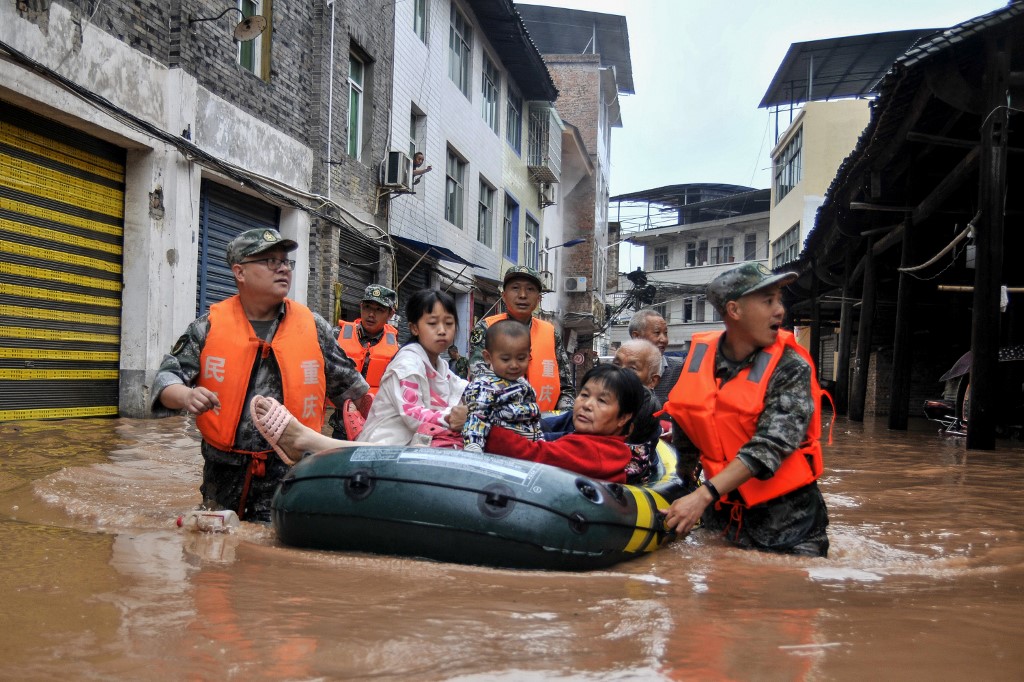(AF) Over the past five weeks many parts of China have experienced severe flooding, including historic 100-year highs.
At least 24 provinces and cities have suffered extreme events, which have left at least 20 million homeless and damage estimated at 50 to 100 billion yuan ($7-14 billion).
Last month the flooding was threatening the Three Gorges Dam. Now, the ‘threat’ has now moved from the upper Yangtze to major conurbations on the lower Yangtze.
Cities such as Wuhan and Chongqing are under water. Chongqing alone had at least 495,000 emergency rescues and evacuations.
Meanwhile, major agricultural provinces have been swamped and many communities are cut off because of damaged roads, bridges that were washed away and landslides. Conditions are still critical, so it is difficult to assess the full extent of damage to crops, plus business supply chains and industry.
Researchers quoted by Sina.com quoted climate researchers who said the disastrous flooding followed very bad flooding in 1998 and 2016. They said the increase and scale of major flood events has its roots in climate change.
China also had a severe drought in 2011. Chinese scientists blame this phenomenon on the El Nino effect. El Niño has become more frequent.
In 2018, research published in Nature by the Qingdao Marine Science and Technology Pilot National Laboratory, said that under the greenhouse effect, the variability of the El Niño phenomenon in the eastern Pacific increased by 15%, causing extreme El Niño events of 50% of cases.
China Central TV News, which is state media, reported earlier that due to heavy rainfall in the middle and upper reaches of the Yangtze River, the amount of water entering the Three Gorges Reservoir had continued to increase.
On June 29, the Three Gorges Dam opened two large sluice gates to increase the discharge flow and free up storage capacity to meet flood conditions.
Before the announcement of the gates being officially opened, the inflow into the Three Gorges Reservoir was 39,000 cubic meters per second, and the water level was 147.51 meters. That meant the water level exceeded the flood limit by 2.51 meters.
Today, July 7, The Peoples Daily quoted the head of the National Defence General Office as saying it was expected that from July to August, northern China would receive more of the overall rainfall than southern provinces, with more areas waterlogged than dry.
Most of the northeast and north, plus Huanghuai, western Inner Mongolia, and most of the northwest would have heavy precipitation, which may cause heavy floods.
The upper and middle reaches of the Yellow River, the Haihe River Basin, the Songhua River Basin, and the Huaihe River Basin may face heavier floods, it said, while most of Hunan, northwestern Guangxi, and Guizhou would get more rain, and floods may occur in the middle reaches of the Yangtze.
The precipitation in eastern Inner Mongolia, the upper reaches of Hanshui, the northeast and west of the southwest, and northern Xinjiang may be low, and with sporadic dry spells, it said.






















